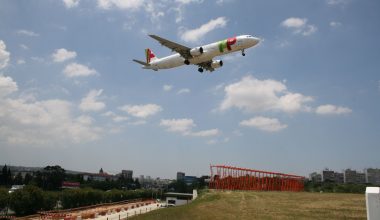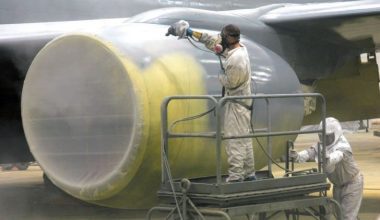Boom of Aviation and its impact on the environment
April 30, 2017-Nepal
Aviation is the art of aeronautics. The word aviation was coined by a French writer, former naval officer, Gabriel La Landelle in 1863 from the verb avier (synonymous flying), itself derived from the Latin word avis (“bird”) and the suffix -ation.
Aviation is encountered as a significant part of the national economy which supports for the movement of people and goods throughout the world, enabling to economic growth of the country. Aviation now has become a major part of transportation and an integral part of the infrastructure of modern world.
Currently, aircraft accounts more than 10% of the world’s passenger and is the easiest and fastest mode of travel. Aviation market today has made influence on the global economic along with various industries. The activities of Air Transport industry have been directly circumscribed by public interest.
Energy used and environment impacts, as represented air pollution and noise pollution are the two major drives for today’s aviation sector. The impact of aviation towards the environment occurs because of Aircraft power plant which exhausts heat, noise, particulates and Hazardous Substances which leads the surrounding to contribute to climate change and Global Dimming. Some of the others aircraft emits particles and gases i:e; Carbon dioxide (CO2), hydrocarbons, carbon monoxide, nitrogen oxides, sulfur oxide, water vapor and black carbons which interact themselves between the atmosphere resulting the deterioration of the environment.
The rapid growth of air travel in past years have contributed to increase in total pollution attributable to aviation in-spite of the being more fuel-efficient and less polluting exhausts fumes from the turbofan and turboprop engines. The survey report from 1992 to 2005 shows the passenger kilometers increased 5.2% per year and in the European Union, greenhouse gas emissions from aviation increased by 87% between 1990 and 2006.
Environmental issues are concerned to airport management, such as air and noise pollution, water quality impact; hazardous substance, etc. should be outlined. Discussing general option may be fruitful for project planner to explore relevant environmental issue and address them on the appropriate manner.
-Air Pollution:
Aviation is the major source of air pollution leading to significant public health impacts. The aircraft uses 13% of fossil fuels consumed during the transportation. Being the second largest transport after roadway, it increases the concerns associated with the impact of aviation air pollution on the global atmosphere along with the desire to reduce aviation emission.
The Jet emission can cause lung, throat, nasal, larynx and brain cancer, lymphoma, leukemia, asthma, and birth defects. Highly carcinogenic benzpyrene, a byproduct of jet fuel combustion attached to soot, can cause cancer and tumors in humans through lung and skin adsorption.
-Noise Pollution:
Noise produced by the engines of an aircraft is unwanted sound. An aircraft basically produces noise s during various phases of flight i:e; on the ground while parked when an auxiliary power units are powered on, while taxiing, on run-up from propeller and jet exhaust, during takeoff, before departure and arrival paths, over-flying while en route, or during landing. Although some time hearing of such noise loss occurs naturally with age, in many developed nations the impact of noise is sufficient to impair hearing over the course of a lifetime. Elevated noise levels from the aircraft can create stress, increase workplace accident rates, and stimulate aggression and other anti-social behaviors.
Many people regularly hear aircraft noise. The noise from the aircraft can cause hearing impairment, hypertension, ischemic heart disease, annoyance, sleep disturbance, and decreased school performance.
– Hazardous Substances:
The operation of the new generation modern airport requires the use of varieties of substances that can be the hazardous for the airports if not disposed properly. Aircraft Maintenance and Airport Maintenance process requires a variety of chemicals substance regularly which regulatory agencies have the toxic labeled on it. Cleaning of the aircraft is also a major contributor factor of hazardous waste generated at aircraft maintenance facilities. These include solvents, cleaning agents, hazardous waste generated at aviation maintenance facilities.
Among the most widely encountered hazardous chemicals in aviation maintenance facilities are acetone, ammonia, asbestos, carbon monoxide, chlorofluorocarbons, ethylene glycol, etc. It is important that airport management team understand the responsibility and communicate it throughout the organization for the safe disposal of these chemicals. The airport employees must have access to knowledgeable persons who can provide professional guidance to reduce the amount of hazardous waste generated at these facilities, new concepts, materials and processes needs to be explored?
-Aviation Turbine Fuel:
Airports are required to hold sufficient storing and dispensing aircraft and automotive fuels storage tankers. Two options available are above ground or underground. Regardless of the type of a fuel farm requires the employment of trained professionals to carry out their duties in a responsible manner. Understanding proper handling procedure, it is imperative that these employees understand and comply with all applicable regulations concerning permits, required documentations and notification procedure.
Similarly, analyzing the current context of Nepalese Aviation industry, the industry has bloomed in comparison with recent past years. Increase in fleet by various airlines in the country has added additional aircraft to the country with the increase of air travelers. Thus the increase of additional aircraft in the country has intentionally brought some drawbacks such as air and noise pollution along with other additional environmental disturbing factors as been mentioned above. Since, transportation is the field of dynamic and a much needed component for any country to develop. So the country needs to be aware of the upcoming challenges and handle them wisely to overcome such environmental degrading components.






